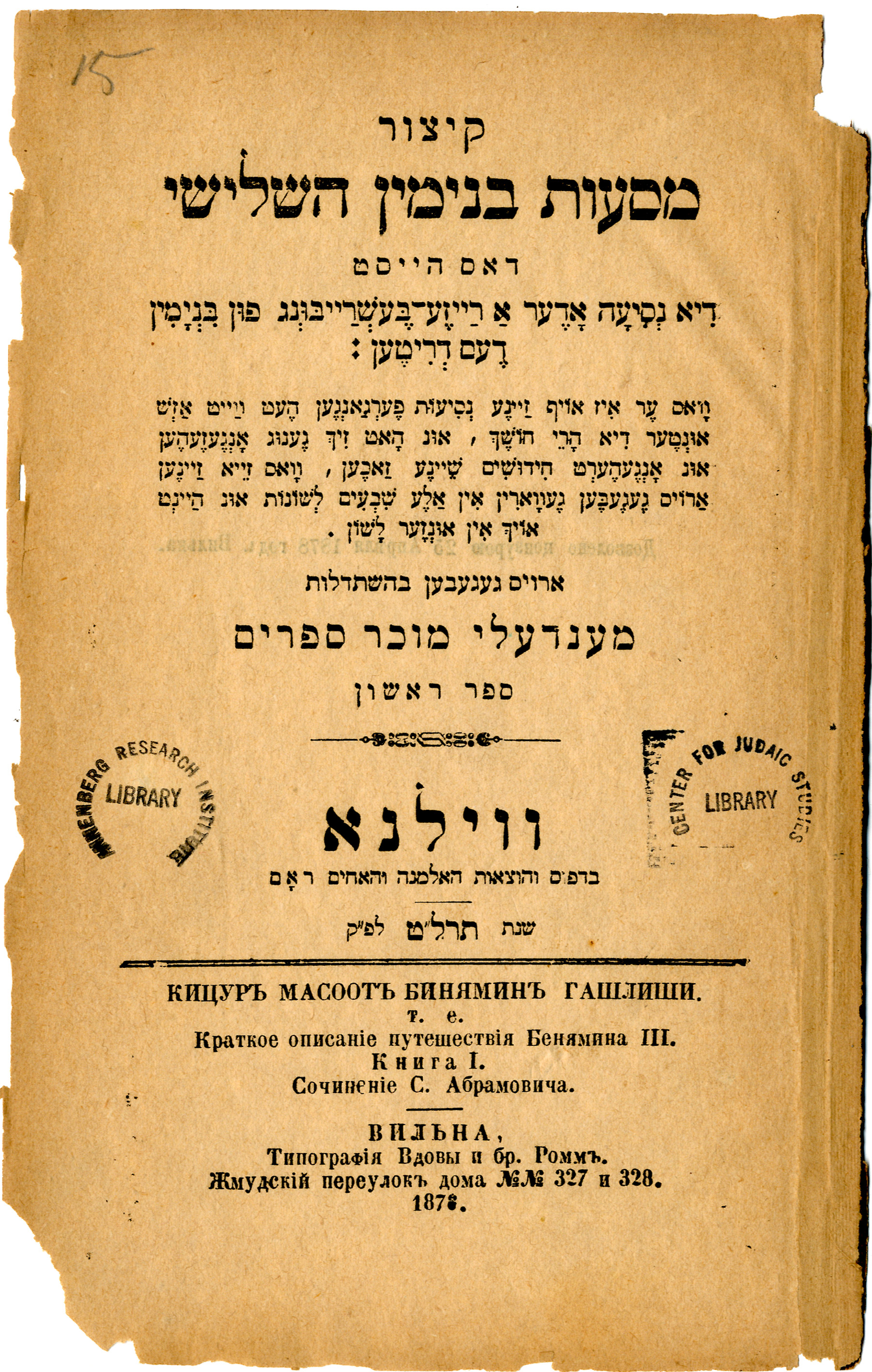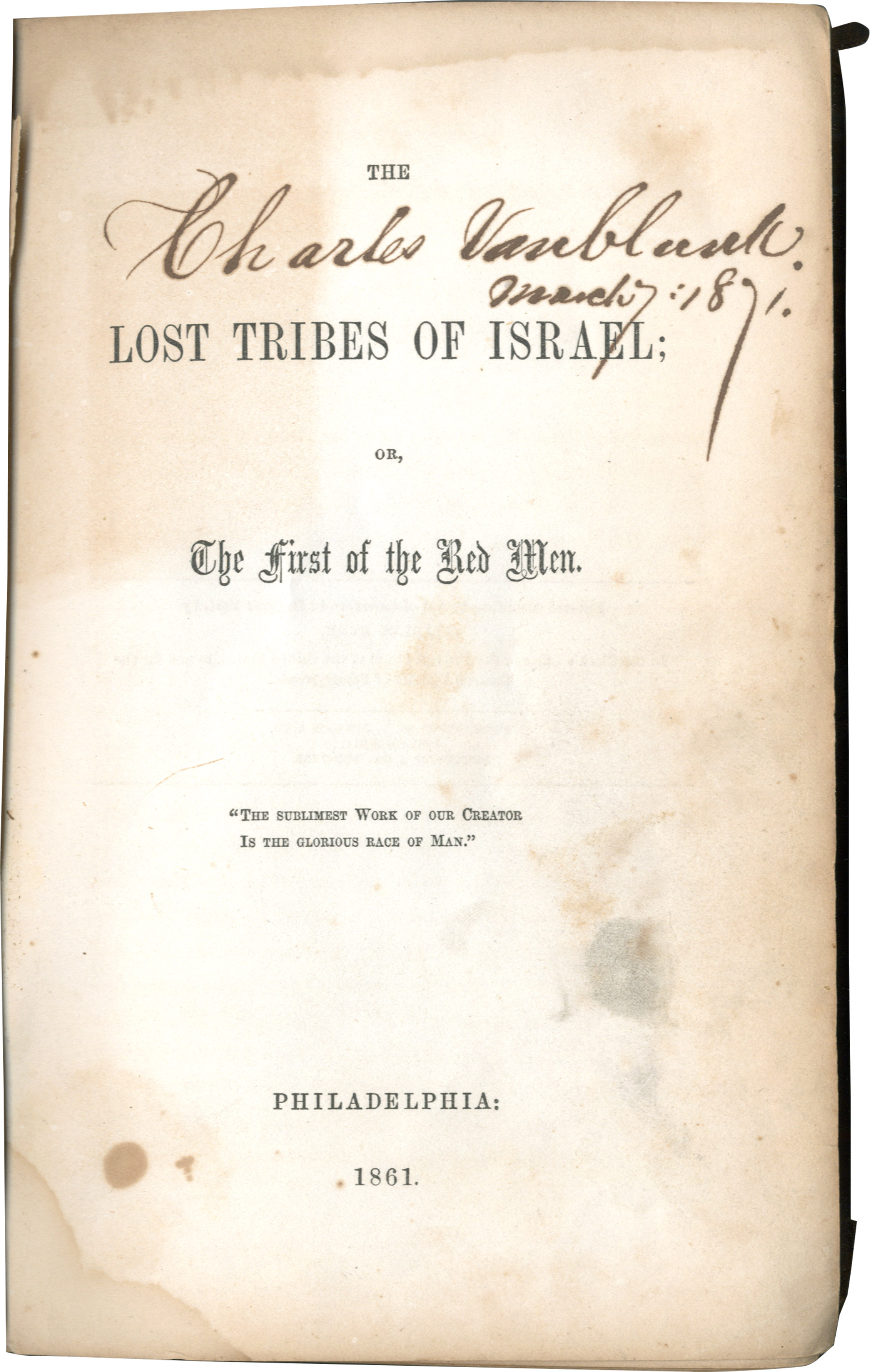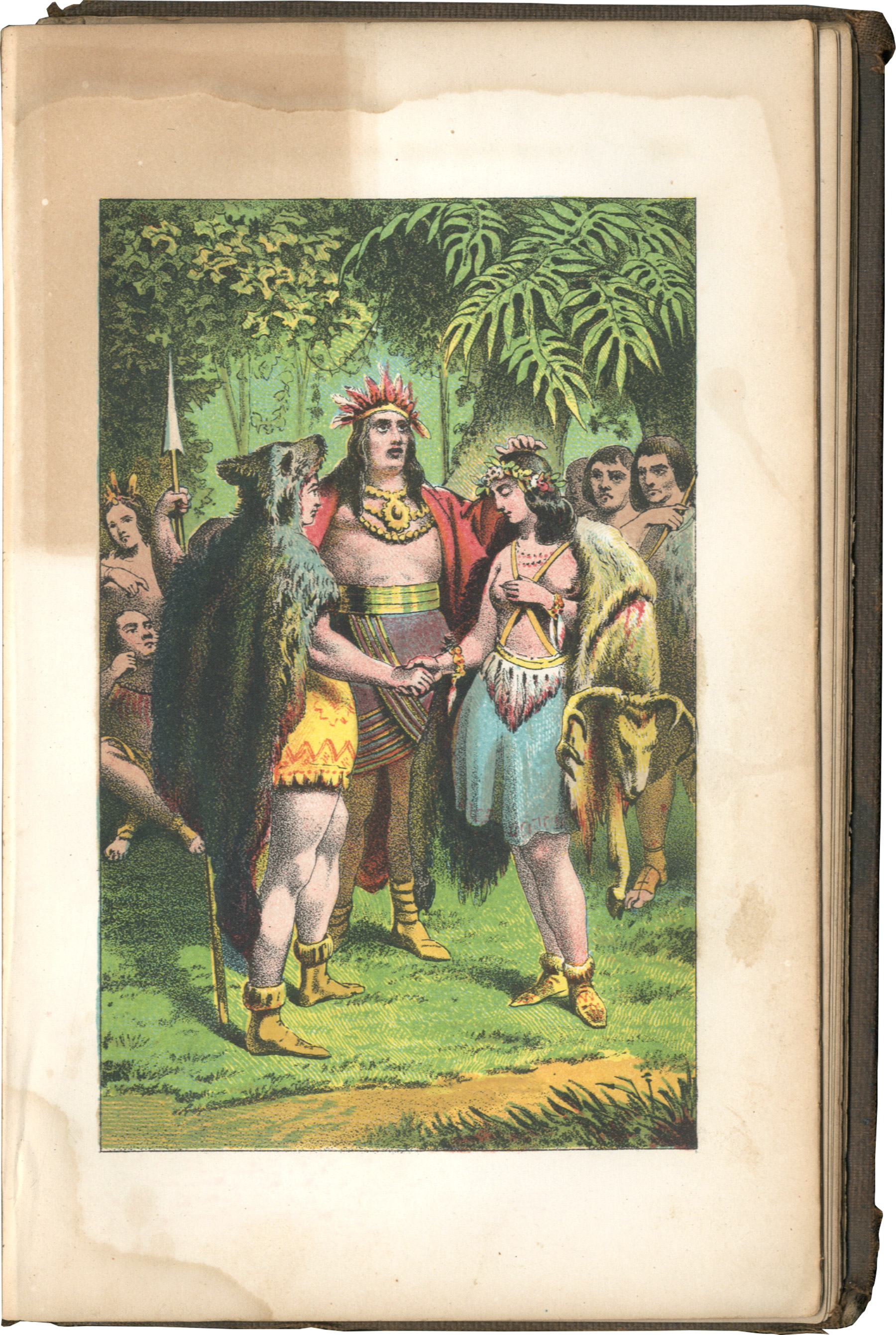In the Yiddish novel, Kitser masoes Binyomin ha-shelishi, first published in 1878, Mendele Mokher Seforim describes the travels of Benjamin the Third who sets off in search of the legendary Little Red Jews. These are the Ten Lost Tribes of Israel, the heroes of one of the most vibrant myths in Jewish culture, who are commonly referred to as royte yidelekh in Yiddish. Their unique coloring, not known from any other Jewish language, goes back to shared linguistic usage and folklore among Jews and Christians in late medieval and early modern German lands. Both German and Old Yiddish vernacular cultures were familiar with the myth of the Red Jews, a variant of the Ten Lost Tribes beyond the Sambatyon River imagined as having red hair and beards or a ruddy complexion.
Around the same time that Mendele published his novel in Eastern Europe, across the Atlantic, Charles Even wrote a novel on Red Jews of his own that he published in 1861 with Philadelphia publisher J.B. Lippincott & Co. Unrelated to the Yiddish legend, Even identified the Lost Tribes of Israel with red skinned American Indians. In a late example of the Jewish Indian theory that had been popular especially in the seventeenth and eighteenth centuries among Jews and Christians in Europe and America alike, Even tells the fictional story of a group of young Jews descending from the Lost Tribes who travel to America in an exodus of their own, in search of a life in peace and safety. When they land ashore the promised land, almost starved from the long journey, they gorge poisonous berries, from which their skin miraculously turns dark red! These Red Jews then intermarry with native American women: the origin of The First of the Red Men.


